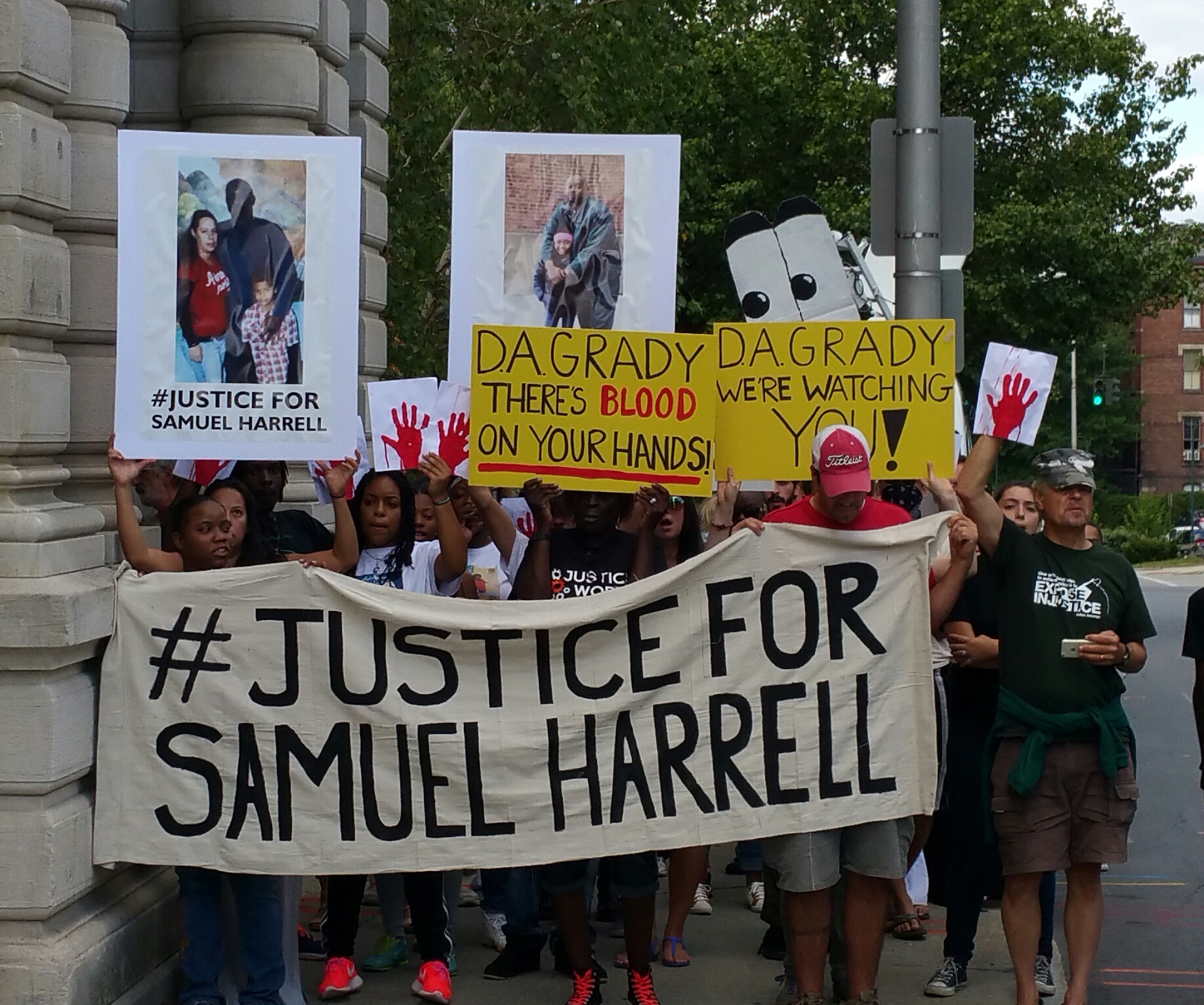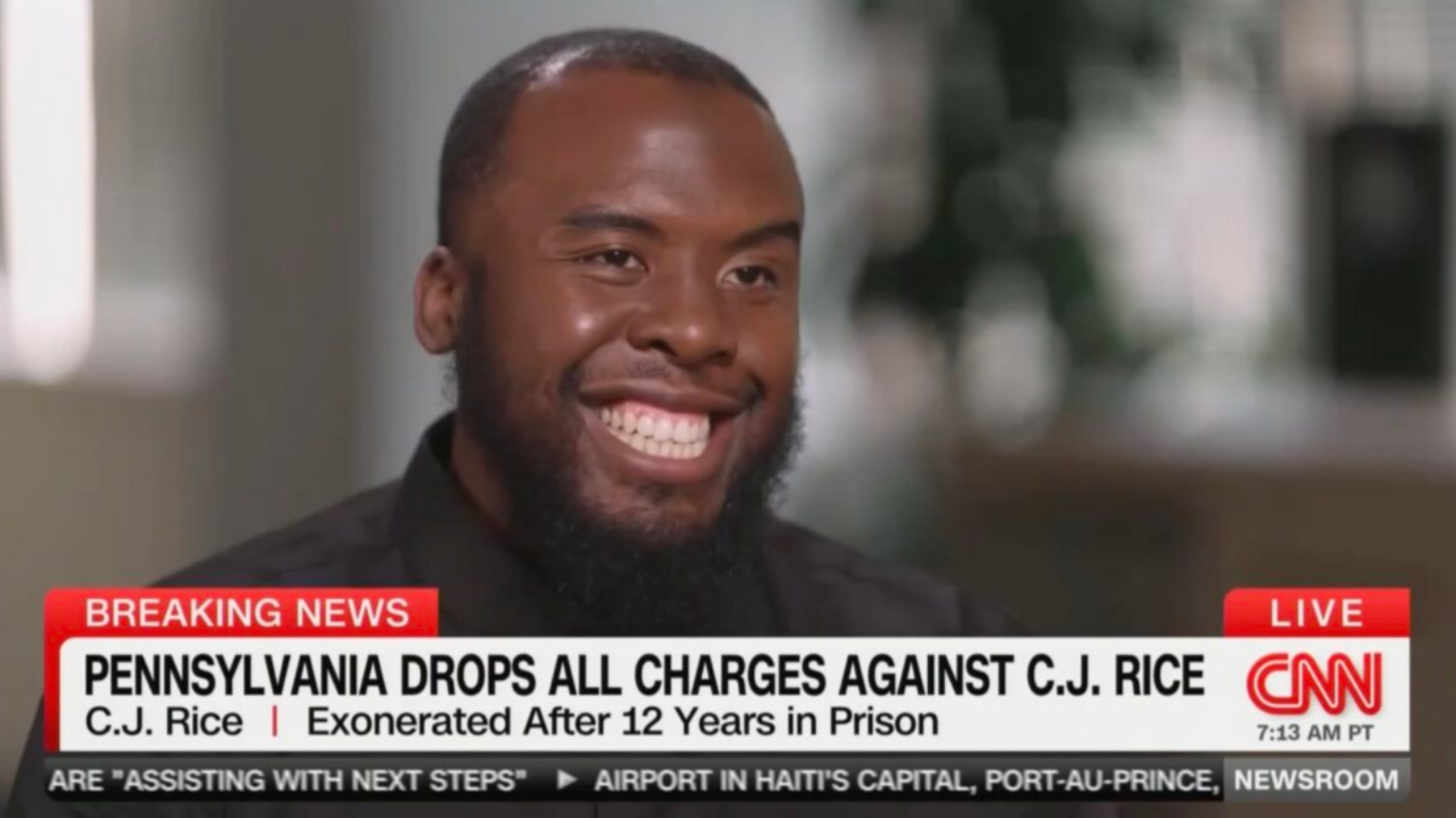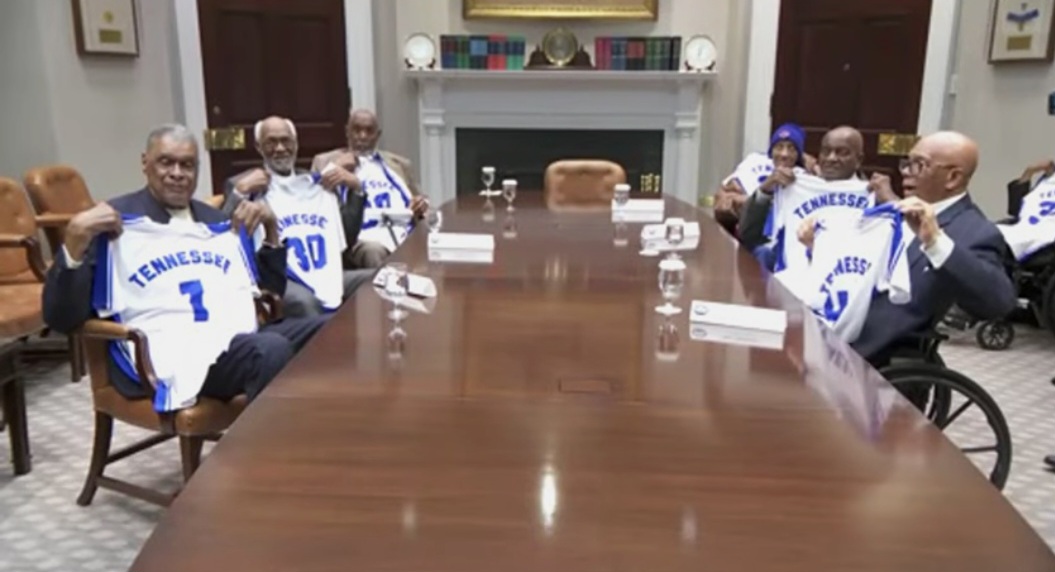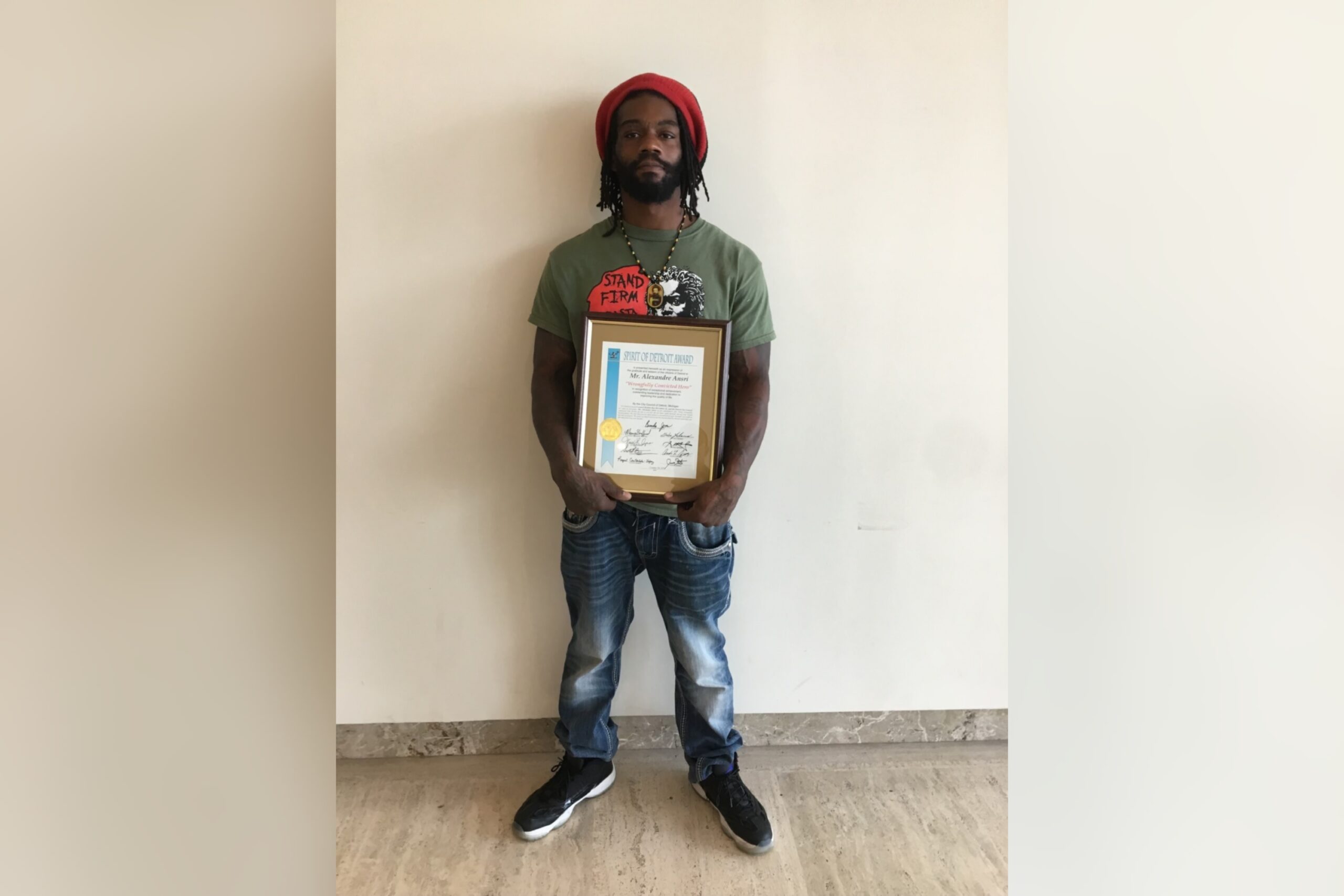Social Justice
FishKILL Vigilantes
Who watches the watchers? Despite all of the violence experienced by prisoners at the hands of correctional officers

In April 2014, Samuel Harrell was sentenced to 8 years in the New York State Department of Corrections and Community Supervision (NYDOCCS) for one count of Criminal Sale of a Controlled Substance in the 3rd Degree, a non-violent, Class B felony. He started his sentence at Clinton Correctional Facility, but in January of 2015 he was transferred to Fishkill Correctional Facility in Beacon, N.Y., a medium security mental health facility. In 2010 Sam was diagnosed with Bipolar Disorder, his family and friends all noticed a change in him, never signs or acts of violence, but when he was not on his medication he suffered from erratic behavior, delusions and paranoia. His wife Diane Harrell said he would go through the house and turn over family photographs, fearing that they were staring at him. He would also think the television was talking to him.

Samuel Harrell
The day of his death, Sam was in a state of deep depression. Ibrahim Camara said he found Harrell, whose nickname was JRock, sitting alone, watching television and asked him what was wrong. “I said, ‘Is it your mom, family or something?’“ He shook his head yes. Mr. Harrell’s mother died that past November in 2014.
Off of his medication and even after the proper authorities inside the prison were notified of his condition by people on the unit with him, it still went untreated and ignored.
On the night of April 21, 2015, around 8:30 pm, he slipped into a delusion and told an officer that his wife and sister were outside waiting to pick him up and he needed to leave, according to one witness affidavit.
No one was waiting outside for him and he still had years left on his sentence, but he would never get a chance to finish that sentence and go home to his family. That night, Samuel Harrell, 30 years young, was killed by the “The Beat Up Squad.” A rogue gang of correction officers known for inflicting pain and terror, every prison in New York State has a similar faction.
Officers say that they called for medical and mental health assistance, but no one answered. Soon after another witness reported that two more officers arrived. “ I believe JRock panicked after seeing all those officers surrounding him,” the witness wrote. “JRock jumped up and ran.”
“I could feel the walls shaking…”
Mr. Camara was in the dayroom watching the Boston Celtic and Cleveland Cavaliers playoff game when he heard a commotion out in the hall. “Me and other inmates, we hear the walls shaking, boom, boom, boom, boom,” he recalled. “Somebody opened the door up and looked outside, and said, “Yo, that’s JRock they got out there.”
According to 19 signed and sworn affidavits, Harrell was not armed, he was not drunk or under the influence of drugs. He was not aggressive, did not use abusive

Family, friends,and supporters gather outside Fishkill Correctional Facility in Beacon, N.Y., on October 21, 2015 to mark the 6 month anniversary of Samuel Harrell’s death. Photo: Erik Jensen
language, and did not make a single threat. An officer handcuffed Sam then threw him face first onto the cold, hard floor. He jumped on his back and landed a knee square between Sam’s shoulders, then proceeded to punch him in the face. Witness accounts say that Harrell never resisted. Outnumbered twenty to one, the officers threw punches, kicks, and screamed “You f**king n**ger!”
“They were jumping on him like a trampoline,” recalled Edwin Pearson, a witness that watched everything from a nearby bathroom.
“I saw officers kicking him, jumping on his head multiple times and screaming, ‘Stop resisting,’ even though he was handcuffed already and I didn’t see him moving.” Mr. Pearson has since been released after serving two years on a weapons charge.
Mr. Camara said inmates were surprised that Mr. Harrell, who was over six feet tall and weighed 235 pounds, did not try to fend himself. “People was mad, I was mad,” he said. “You’re a big guy and you literally let these people kill you.”
While Mr. Harrell lay lifeless on the floor, officers would walk by, kicking and hitting him, Mr. Camara said.
Most of the witnesses could identify the officers by last name only. On a database of New York State employees (SeeThroughNY.net), there are several guards that match the Fishkill officers named in the witness affidavits as being directly involved in the encounter. Thomas Dickenson (named by 10 witnesses), John Yager (10), Officer Michels (9), Bryan Eull (5), and a white woman only known as “Ms. B” (4). Also identified was the ranking officer at the scene Sergeant Joseph Guarino. Sergeant Guarino confirmed he was present that night but would not comment.
Four witnesses wrote that they heard Sergeant Guarino order officers to throw Mr. Harrell down the stairs.
Samuel Harrell was then dragged and thrown down a flight of stairs. Lucas Renfrow, a witness, reports seeing him “bent in an impossible position.” “His eyes open, but they weren’t looking at anything.”
“His body came down head first,” Renfrow said.” “What I seen was his eyes were open. He looked at me and I froze until an officer ( CO Eull) came up and grabbed me by the neck and slammed me in the corner… telling me if I say something I would be in the same trouble (Harrell) is.”
“Harrell came rolling sideways down the stairs,” witness Mr. Martinez wrote, adding that he had a “bedsheet tied all around his body and he was in mechanical restraints.”
Sergeant Joseph Guarino, called for medical attention since Harrell was unresponsive. No CPR was administered. No form of resuscitation was attempted. Harrell’s body was placed in a wheelchair, covered with a torn white sheet, and wheeled away. A porter was called to clean up the blood. “His feet were in black socks, I saw [them] scraping the floor.” Another witness said. There were no surveillance cameras in the area, and corrections employee’s acknowledge there are only a few in the whole facility.

Family, friends, and supporters walk with lit candles from Beacon High School to Fishkill Correctional Facility.
Photo: Erik Jensen
Through the years, Sergeant Guarino, 60, has been sued several times by prisoners accusing him of brutality. One case was settled by the state in 2012 for $60,000 and another in 2011 for $65,000. In a 2011 deposition, he said inmates typically filed around 30 grievances a year against him.
According to records from the ambulance service, a call came in reporting a possible overdose at the Fishkill Correctional Facility at 9:16 p.m.; the ambulance team arrived there at 9:30 p.m. and reached Samuel Harrell at 9:34 p.m. “Staff reports that pt. (Harrell) was possibly smoking K2 synthetic marijuana and became very aggressive, shortly after he went unresponsive and into cardiac arrest,” the records state. No mention of the assault. The Orange County Medical Examiner’s Office later performed the autopsy and found no traces of any illegal drugs in Samuel Harrell’s body. Only anti-depressants and nicotine. He died of cardiac arrhythmia, they ruled his manner of death a “homicide,” caused by “physical altercation with corrections officers.”
The following morning after Mr. Harrell was brutally beaten to death, at 7:30 a.m., Harrell’s sister, Cerissa Harrell, received an anonymous phone call from an inmate in Building 21.
“He called me and said, ‘Sam got hit the night before and they took him. He hasn’t been back and nobody has heard or seen from him,’ ” Cerissa said.
“You could hear the franticness in his voice,” she recalled.
Half an hour later someone from NYSDOCCS called to say her brother was dead.

From left: Jeff Golden from Beacon Prison Action, Samuel Harrell’s wife Diane Harrell, and Erik Jensen. Photo: Erik Jensen
No officers have been held accountable for Samuel Harrell’s death. Quite the contrary, witnesses who still had to serve their time at Fishkill were the ones who were punished. Many have been placed in solitary confinement and threatened with violence. Their mail and phone calls cut off after speaking with Harrell’s lawyers, family, and reporters.
The Correctional Association of New York, a 171 year old inmate advocacy group with a legislative mandate to inspect New York State prisons, published a report documenting “harassment and provocation” by officers working in building 21 on the 3-11 pm shift, in 2013. This was the same location and the same shift where Samuel Harrell was beaten to death. Both acting NYSDOCCS Commissioner Anthony Annucci and Fishkill’s Superintendent William J. Connolly, who resigned 3 months after Harrell’s death, were briefed, but no action was taken.
On September 9th of last year, Harrell’s family traveled from North Carolina, Texas, and Kingston, New York to hold a news conference. They stood in front of the cameras and microphones in matching shirts with a picture of a smiling Sam in front of angel wings. The shirts read, “Celebrating the life of Samuel D. Harrell, III.”
The father who just lost his son addresses the gathering of supporters and reporters.

From left: Sen. Bill Perkins, Samuel Harrell’s father Samuel Harrell Sr., Attorney Jonathan Moore, and Samuel Harrell’s uncle, at press conference in Manhattan this past September. Photo: Harrell family
“Every day I wake up and thank God for another day.” He speaks about the physical, psychological, and emotional pain. The grieving, the memories, and imagining what his son must have been feeling when he took his last breath.
“The senseless behavior shown by the correctional officers was inhuman,” Samuel Harrell Sr. said. “He was handcuffed, this was a criminal act.”
“I’m his father,” his voice cracks with emotion before he is almost finished, “I feel like I should have passed before him. I’m burying my son.”
Samuel Harrell was only 30 years old, he was not sentenced to death, yet it was the sentence handed down on him by those who are sworn by oath to ensure the care, custody, and control of a prisoner during his sentence. His right to life was stripped by those who had no authority to claim it. The correctional officers committed an act of thievery, and it was taken in an act of archaic brutality. The self-titled Beat Up Squad do not wear name tags as required by NYSDOCCS regulations, they are nameless vigilante officers who function as an organization. Reports from prisoners go back for a decade, with details about a gang of CO’s patrolling Fishkill terrorizing prisoners.

Erik Jensen remembers his friend Samuel Harrell at a make shift memorial by the Fishkill Correctional Facility entrance sign.
The Harrell’s family attorneys from Beldock Levine & Hoffman have filed a federal civil rights lawsuit against the New York State Office of Mental Health, NYSDOCCS, the New York State Correctional Officers & Police Benevolent Association, as well as each individual officer involved in the death of Samuel Harrell.
Attorney Jonathan Moore said the lawsuit does not seek a specific sum in damages, and that the family has yet to hear from Gov. Cuomo’s administration. Moore said the New York State Correctional Officers & Police Benevolent Association (NYSCOBA), was named as a defendant “for what we believe was a conspiracy to deprive Samuel Harrell due process and equal protection under the law.”
Moore went on to say that the union conspired with officers to provide false information to the Poughkeepsie Journal. He said union representatives were at the facility and published a poster that appeared all around the prison and stated that Harrell had died because he was fighting the officers and had suffered a drug overdose.
“That,” Moore said, “is a flat out lie.”
“You would think the leader of the state would reach out to the family with some words of sympathy,” Moore said. “We have heard nothing from them.”
Dutchess County District Attorney William Grady and Preet Bharara, the U.S. Attorney for the Southern District of New York, are conducting a coordinated investigation.
“As we have said previously, no member has been placed on leave, suspended or charged as a result of an investigation,” NYSCOBA spokesman James Miller said in a written statement. He went on to say, “Rather than simply relying on allegations made by a handful of violent convicted felons, we will continue to work with our partners in law enforcement to ensure a resolution to this tragic incident.”
The lawsuit asserts that comments made by Miller to the Poughkeepsie Journal several days after
Harrell’s death were false. Implying with conviction that Harrell died from an overdose.
What is the price of life? For Freddy Gray in Baltimore it was $6.4 million dollars for wandering eyes. We have become desensitized to death, but the right to breathe and live is sacrosanct.
At a press conference, state Sen. Bill Perkins, a Manhattan Democrat, announced he would introduce legislation that would provide for an independent investigation into the NYSDOCCS; overhaul recruitment and training; implement the use of independently monitored cameras at correctional facilities; and provide that a medical and crisis intervention staff be on call, among other reforms.
“There is a lesson to be learned from the tragic taking of Mr. Harrell’s life,” Perkins said. “System-wide reform is needed.”
Harrell’s family is encouraged that federal prosecutors have joined the investigation. “We are less hopeful the Dutchess County D.A. will be interested because they have received reports month after month, year after year, about violence at the prison and have never done anything,” Moore said. “Unfortunately it has taken the unnecessary, brutal and needless death of a young man to draw attention to a real serious problem in the prisons.”
Inmate witnesses are typically viewed with skepticism by investigators, but the accounts from Fishkill are very consistent and from various vantage points.
Polygraph tests are inadmissible in the court of law, but if the NYSDOCCS and NYSCOBA are as honest and upstanding as they assert to be, wouldn’t it be wise to alleviate the harsh allegations and accusations by inserting mandatory lie detector testing if accused, into their union contract agreements? All 19 signed and sworn witnesses in Samuel Harrell’s case have agreed to take a polygraph, but nothing from the other side. You would think the State of New York would want to weed out the corruption, abuse, assaults, and in this case, the murderers.
Who watches the watchers? Despite all of the violence experienced by prisoners at the hands of correctional officers, until March 2015, criminal charges have never been brought against correctional officers for a non-sexual assault on a prisoner anywhere in New York.
Cerissa promised Samuel, “We will not stop fighting for you until you get the justice youdeserve.”
She continued, “We ask the District Attorney to bring charges against the men who murdered my brother. I pray for those who, like me and my family, have lost a loved one at the hands of the authorities. No one should have to endure such pain. We will keep fighting until no one else will.”
The investigation into the death of Samuel Harrell is ongoing. It will be one year this April.
Crime & Justice
Exonerated man on a mission to rebuild his life
C.J. Rice, a man who served more than 12 years behind bars for an attempted murder he was falsely convicted of, was officially exonerated on March 18, 2024. He is now on a mission to rebuild his life.

Charles “CJ” Rice was just 17 years old when he was convicted of a crime he did not commit.
CJ Rice Exonerated
Now 30 year old Rice is using the injustice of the last 13 years to galvanize the life he almost spent behind bars after being exonerated and declared legally innocent of the crime he was convicted of in 2013 on March 18, 2024.
According to the GoFundMe, CJ wants to “embrace this opportunity” and become a paralegal.
With the help of Dream.org, the GoFundMe aims to help CJ start a new life with everything from a place to stay to clothes to wear as he builds a new future.
The CJ Rice case
CJ Rice, formally known Charles J. Rice, was convicted in a September 2011 shooting for attempted murder and sentenced to 30-60 years behind bars in 2013.
According to the Pennsylvania Innocence Project, the South Philadelphia shooting left a woman identified as Latrice Johnson, a 6-year-old girl and two others injured.
Johnson called 911 after the shooting and described the suspects as two men running away in hoodies and black sweatpants but couldn’t fully identify them.
Through an initial investigation with victims in the hospital, Rice’s co-defendant, Tyler Linder, was identified as one of the shooters. Detectives interviewed Johnson while she was in the hospital and she identified 17-year-old Rice as one of the shooters running away although she hadn’t seen the teen in a few years. Rice had been friends with Johnson’s son when he was younger, according to the Pennsylvania Innocence Project.
In her description, Johnson said Rice was wearing a hoodie and claimed that she was able to see his full face and long braids poking out the side of the hood. However, Rice’s arrest photo depicted him with shorter cornrows flushed against his head. Despite this, a case against Rice and Linder was built.
According to the Pennsylvania Innocence Project, among the evidence was a theory that the shooting was retaliatory, which wasn’t proven. That’s because Rice was shot and injured a few days prior. It’s alleged the suspects ran from the scene, and Rice’s counsel never used his medical records as evidence to help Rice’s case.
Rice’s case received national attention after CNN anchor Jake Tapper began reporting on it. His father, Dr. Theodore Tapper, is Rice’s former doctor and treated his injuries.
Although it was alleged that the shooters ran from the 2011 crime scene, this is something that Dr. Tapper believed Rice just physically couldn’t do at the time.
Officials believed the 2011 shooting involved gang affiliations, leading the DA’s Gun Violence Task Force to begin their investigation to see whether or not Rice could be re-tried for the shooting or to dismiss the charges in full.
This suggestion of motive and the sole faulty eyewitness identification of CJ led to his conviction on four counts for attempted murder.
A free man
Rice’s defense counsel filed a habeas petition to get CJ out of prison and have his conviction overturned.
On March 18, 2024, the Philadelphia County Court of Common Pleas granted the Commonwealth’s motion to dismiss all charges against Rice, officially making CJ a free man.
Social Justice
After more than 60 years, a championship HBCU men’s basketball team visits White House
An all-Black Tennessee A&I men’s basketball team won three back-to-back national championships at the height of the Jim Crow era, but were never recognized or invited to the White House. That changed on Friday.

This past weekend, the Tennessee A&I men’s basketball team, an HBCU squad that won a title more than 60 years ago, got a White House visit.
Tennessee A&I made history
The living members of the Tennessee A&I Tigers basketball team were honored by Vice President Kamala Harris at the White House.
“This is the greatest day of my life,” said George Finley, a player on the Tigers team, said to CBS News.

Credit : Tennessee State University
The Tennessee A&I Tigers men’s basketball team was the first HBCU team to win a national championship in 1957, and made history again by becoming the first college team to win three back-to-back national titles from 1957-1959.
“I thought this would never take place,” said Finley, who was part of the 1959 championship team, told the network. “[Winning] the championship was big, but it wasn’t as big as being here with [Vice President] Harris today.”
The challenges
In a time of segregation and the Jim Crow era, Black teams were often not recognized for their achievements but the team finally got their just due.
Harris hosted six members of the team in a meeting along with their family, friends, and those close to the group of former athletes. Henry Carlton, Robert Clark, Ron Hamilton, Ernie Jones, George Finley, and Dick Barnett joined Finley in the Roosevelt Room at the White House.
Tennessee A&I is now known as Tennessee State University.
Crime & Justice
Detroit man awarded $10 million after wrongful conviction
Alexandre Ansari was wrongfully serving a life sentence over claims that in 2012 he shot and killed Ileana Cuevas, a 15-year-old girl.

A Detroit man who was wrongfully convicted and incarcerated for over six years was awarded $10 million in damages by a jury.
$10 million for man wrongfully convicted
Alexandre Ansari was wrongfully serving a life sentence over claims that in 2012 he shot and killed Ileana Cuevas, a 15-year-old girl, and wounded two others in Detroit, according to a lawsuit filed by Ansari in the United States District Court, Eastern District of Michigan Southern Division.

Alexandre Ansari (Photo Source: Wolf Mueller Law)
“Once I got the verdict back, my heart dropped. And I’m like, ‘Dang, I got to spend the rest of my life in here for something I didn’t do.’ And you know, I tried to kill myself,” Ansari told Linsey Davis on “ABC News Live Prime.”
“It felt like nobody didn’t put all the evidence together to see that I wasn’t the person in the first place. So things started getting overwhelming for me.”
Exonerated
Ansari, 39, was exonerated in 2019 by the Wayne County Circuit Court after it determined that Moises Jimenez, a former Detroit police detective withheld evidence for Ansari’s trial that would have implicated someone else as the shooter, according to the County of Wayne Office of the Prosecuting Attorney.
Jimenez received an anonymous tip that linked the shooter to the Mexican Drug Cartel, according to the complaint that released Ansari.
The officer withheld the evidence from Ansari’s 2013 trial, according to the lawsuit.
Jimenez’s attorneys told ABC News that the former detective claims that he provided all evidence he uncovered during his investigation and plans to appeal the $10 million lawsuit verdict.
There have been no reported arrests connected to the shooting since Ansari’s exoneration. Ansari was wrongfully arrested for the crime when he was 27 years old.
-

 Entertainment8 years ago
Entertainment8 years agoBad Boy Reunion Concert :: Major Let Down! (Opinion)
-

 News3 years ago
News3 years agoUncle of Darnella Frazier, Teen Who Filmed George Floyd’s murder, Killed in Minneapolis Police Car Crash
-

 Social Justice10 years ago
Social Justice10 years ago11 Facts About The Michael Brown Case
-

 Black Excellence6 months ago
Black Excellence6 months agoUnheard Voices Editor-in-Chief receives prestigious Women of Color STEM Award
-

 Health & Wellness4 years ago
Health & Wellness4 years agoMeet 105-year-old runner Ida Keeling
-

 Interviews5 years ago
Interviews5 years agoAll eyes on Rick Fouche
-

 New Jersey14 years ago
New Jersey14 years agoBad Police Behavior: Who is looking through your garbage?
-

 Entrepreneur Spotlight14 years ago
Entrepreneur Spotlight14 years agoAuthor Larry Wilson Jr : The voice of a new African American writer


































